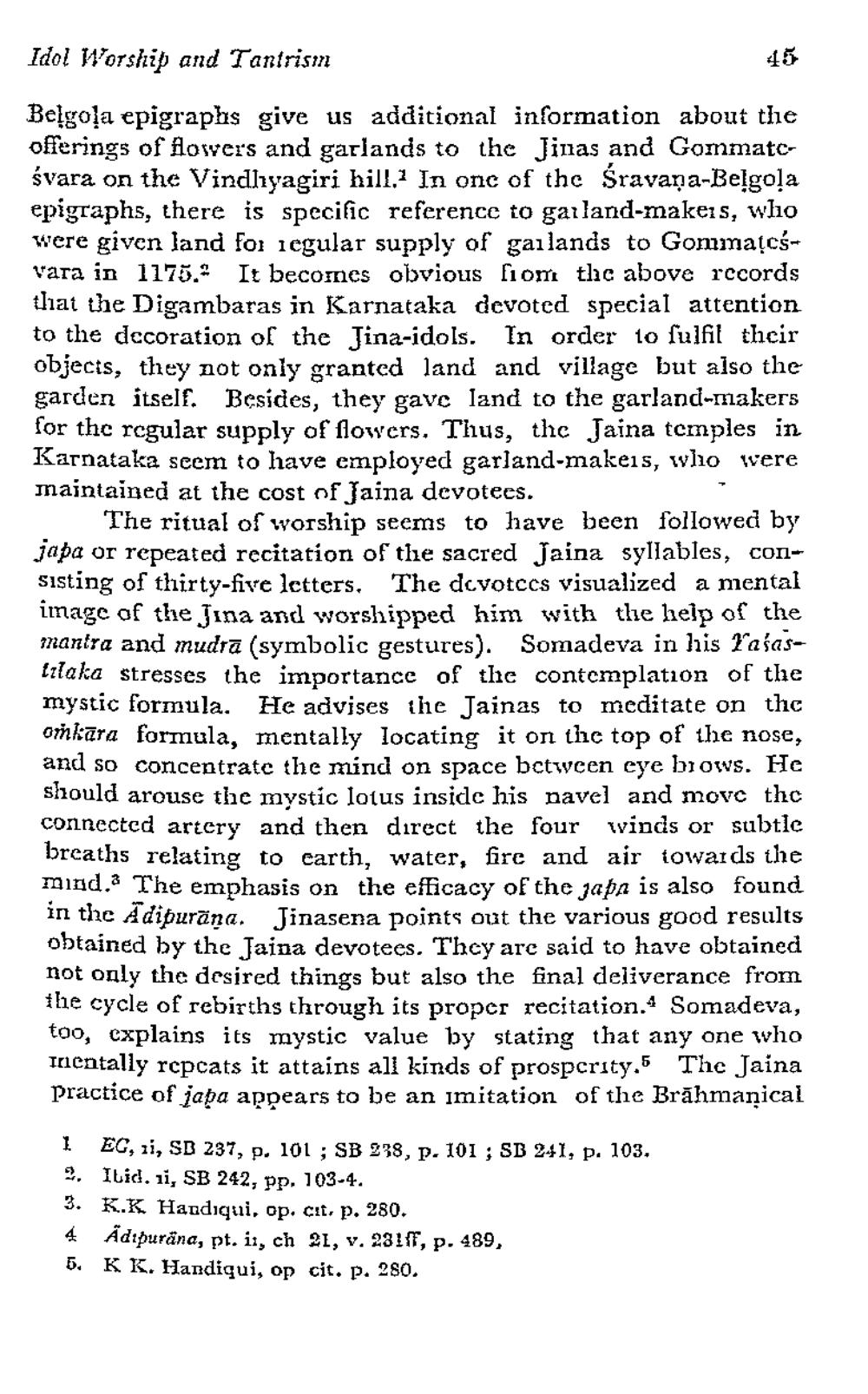________________
Idol Worship and Tantrism
45
Belgola epigraphs give us additional information about the offerings of flowers and garlands to the Jinas and Gommatcsvara on the Vindhyagiri hill. In one of the Śravana-Belgola epigraphs, there is specific reference to gailand-makers, who were given land for regular supply of gailands to Gommatcśvara in 1175.2 It becomes obvious from the above records that the Digambaras in Karnataka devoted special attention to the decoration of the Jina-idols. In order to fulfil their objects, they not only granted land and village but also the garden itself. Besides, they gave land to the garland-makers for the regular supply of flowers. Thus, the Jaina temples in Karnataka seem to have employed garland-makers, who were maintained at the cost of Jaina devotees.
The ritual of worship seems to have been followed by japa or repeated recitation of the sacred Jaina syllables, consisting of thirty-five letters. The devotees visualized a mental image of the Jina and worshipped him with the help of the mantra and mudra (symbolic gestures). Somadeva in his Falastilaka stresses the importance of the contemplation of the mystic formula. He advises the Jainas to meditate on the omkara formula, mentally locating it on the top of the nose, and so concentrate the mind on space between eye brows. He should arouse the mystic lotus inside his navel and move the connected artery and then direct the four winds or subtle breaths relating to earth, water, fire and air towards the mind. The emphasis on the efficacy of the japa is also found in the Adipurana. Jinasena points out the various good results obtained by the Jaina devotees. They are said to have obtained not only the desired things but also the final deliverance from the cycle of rebirths through its proper recitation. Somadeva, too, explains its mystic value by stating that any one who mentally repeats it attains all kinds of prosperity.5 The Jaina practice of japa appears to be an imitation of the Brāhmaṇical
1 EG, 11, SB 237, p. 101; SB 238, p. 101; SB 241, p. 103.
2. Ibid. 11, SB 242, pp. 103-4.
3. K.K Handiqui, op. cit. p. 280.
4 Adipuräna, pt. ii, ch 21, v. 231ff, p. 489,
5. K K. Handiqui, op cit. p. 280.




